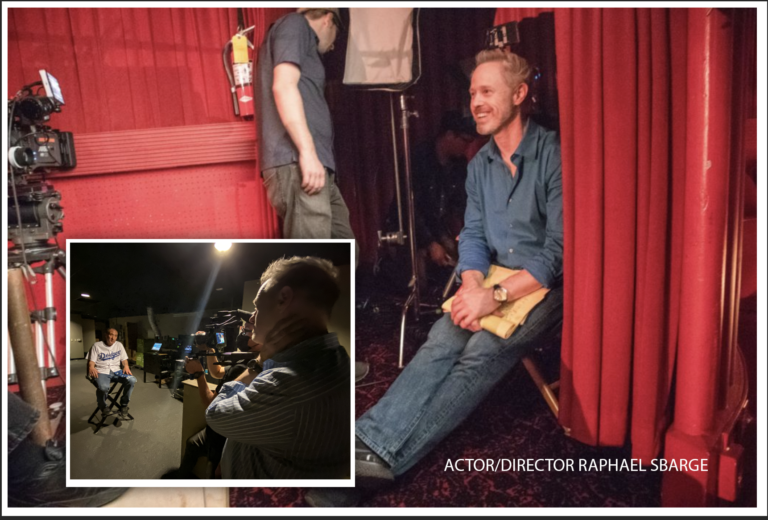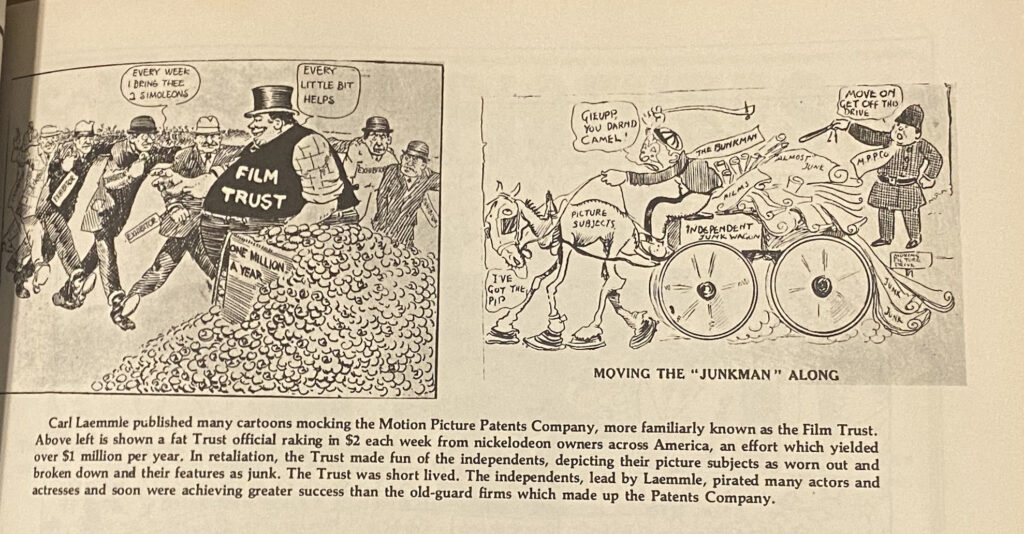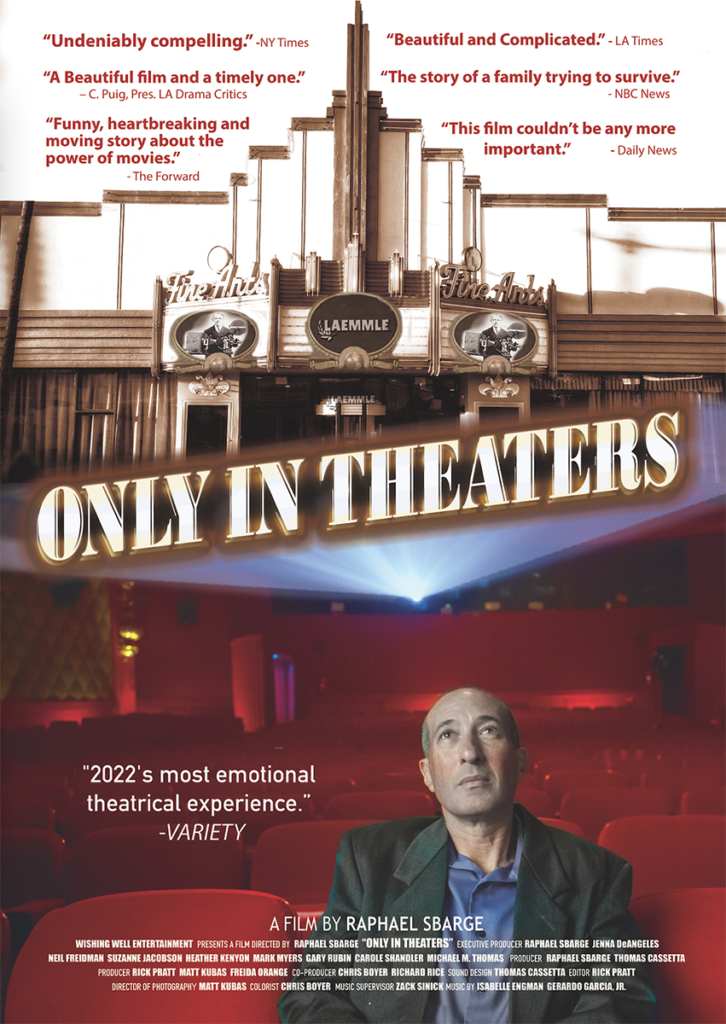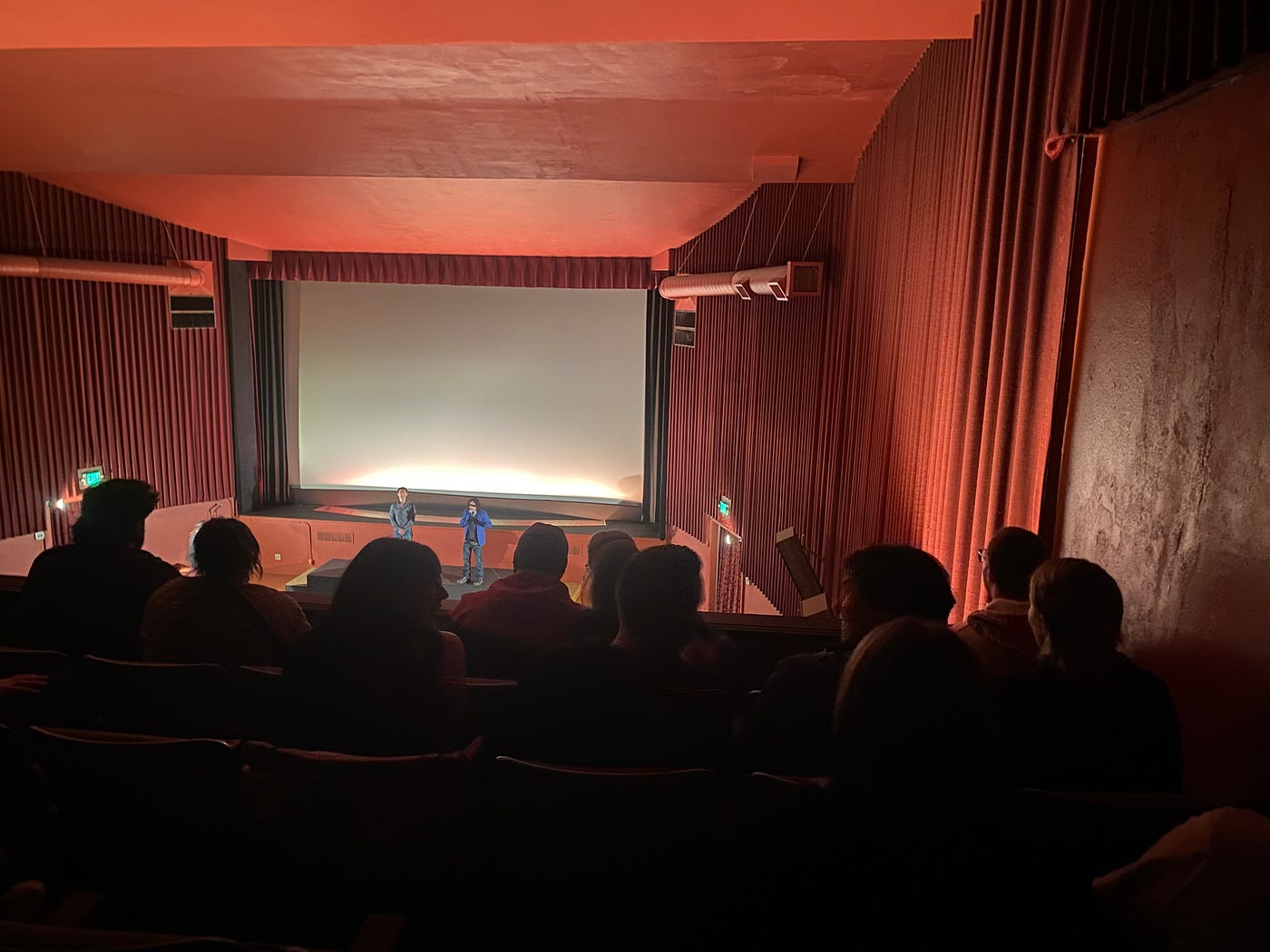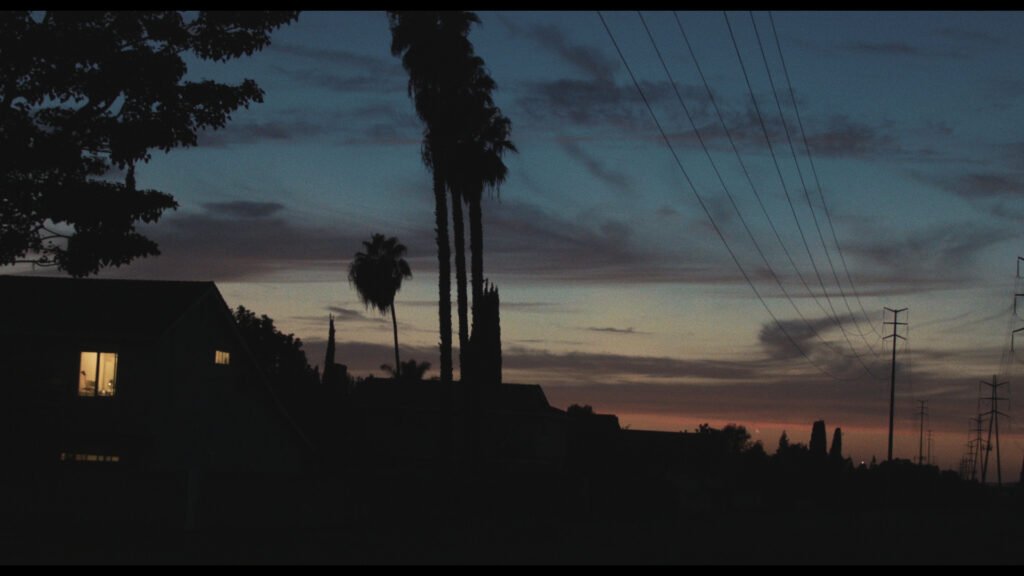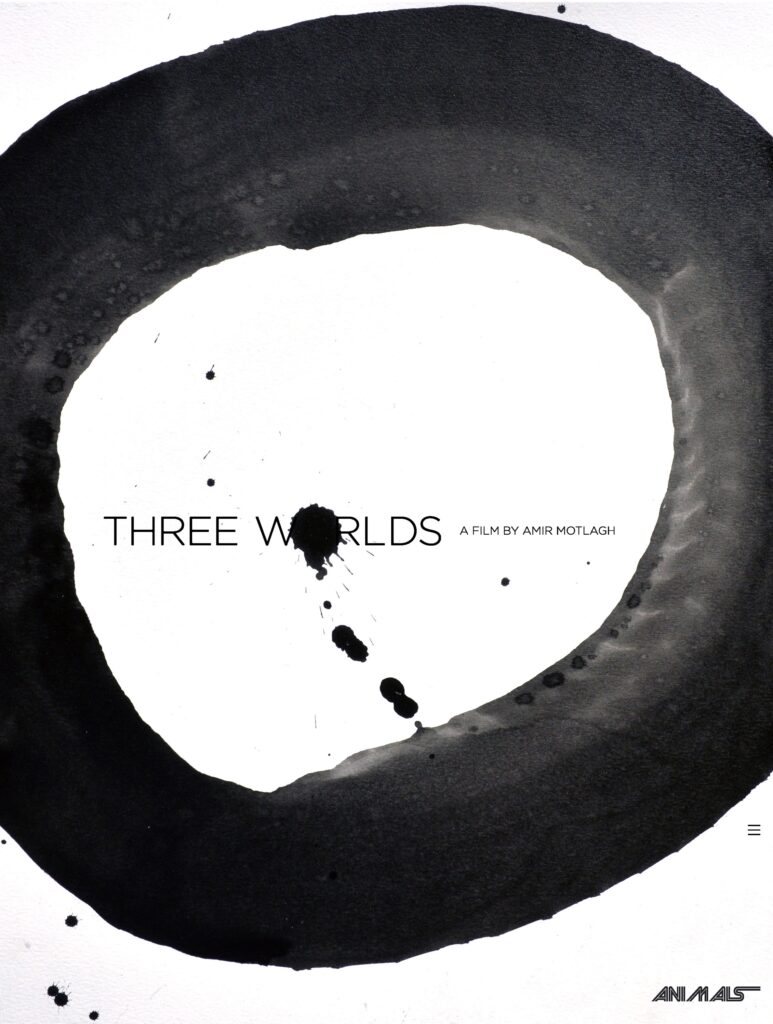When I first watched Only In Theaters the very first thing I wanted to do after it ended was go see a movie in a small, local theater and start to do so regularly. The urge sparked a bit of curiosity. Specifically, I wanted to know – how was the call to action so very powerful? That led me to look into the director, and what his other work was like. I found that Raphael Sbarge’s documentary work features the common themes of community, sustainability, familial connection, the power of collective experiences, and the importance of service. This makes for a very heady combination – one powerful enough to inspire action.
The story of Only In Theaters is, of course compelling – how else to describe a documentary that includes the very beginnings of Hollywood, a small family business, and a global pandemic? There is a sweet coziness within that siren call to action.
I don’t want you to get me wrong – the Laemmles are an amazing family, their theaters are an institution, and their story is an incredible one that exemplifies so much of what I want America to be.
But, to make a good documentary takes more than just a good story. And to make one that inspires people to change their thought process or take action, (like inspiring an independent filmmaker to put together an entire film series), takes a good story in the hands of an adept and talented storyteller.
The fact I was practically jumping out of my seat to see a movie in a local theater made it obvious to me that Only In Theaters is blessed with both.
To show you what I mean, let’s just talk about the opening minute of Only In Theaters (I love analyzing the beginning of things – they are, after all, the time to make sure the balances are correct).
It opens with the sound of an orchestra tuning up before we hear three things – ‘welcome to the theater,’ ‘is cinema dying?’, and ‘ the movie theater is dead’ in rapid succession. Yet the opening barrage lands on ‘what the hell is going to happen to movie theaters?’ These statements are immediately followed by Ava Duvernay talking about how important it was for her work to be seen in theaters. From there, images of movie theaters and headlines throughout the pandemic are interspersed with some of the interviews we’ll see throughout the film.
For every possible problem, a glimmer of hope as an antidote. The action of the images is ‘restricted’ to a laptop screen, with a movie theater visible beyond its edges. We slowly close in on it until the laptop partially fills the entirety of the frame – nearly blotting out the image of the movie theater. A powerful visual symbol of the the rise of streaming.
All of that in the first minute.
To recap: before the title, there’s an orchestral warm up followed by a quick review of the themes, subjects, and players we’ll see throughout the movie.
It’s a perfectly executed overture to the documentary.
Who Puts Such a Perfectly Executed Overture In A Documentary?
Someone who has spent most of their life storytelling and around storytellers, that’s who. So let’s talk about who Raphael Sbarge is for a bit.
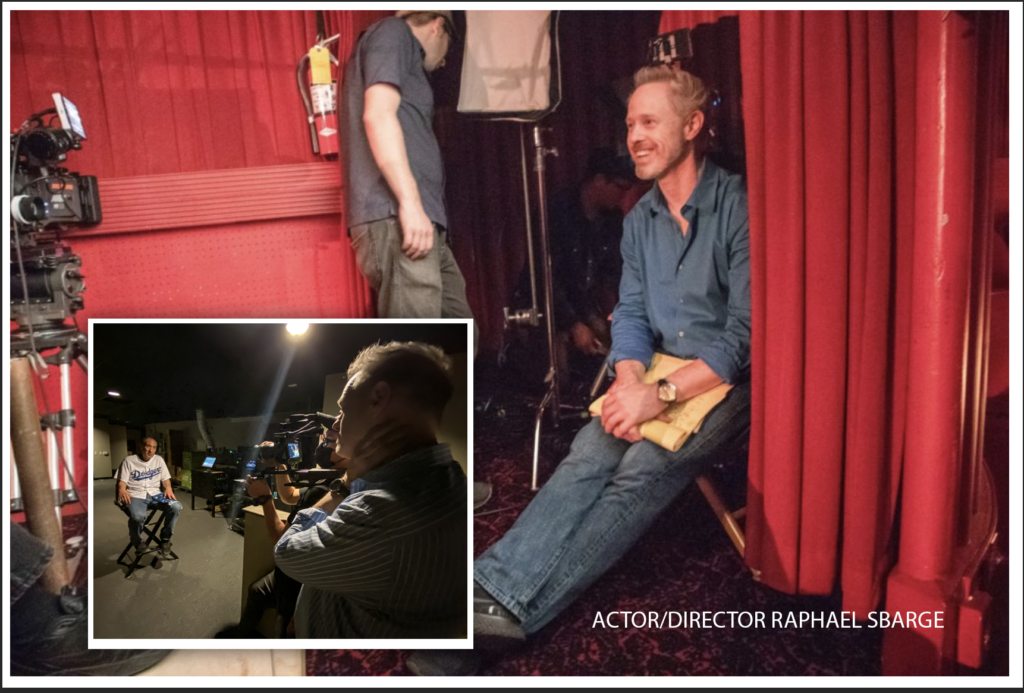
Raphael mentions in the director’s statement for Only in Theaters that his father was an artist and filmmaker and his mother was a Broadway costume designer. He described how the Laemmles, a family involved with storytelling and art, immediately felt familiar to him. It’s no wonder, coming from a family of storytellers.
Raphael also has years of experience as an actor. Exciting experience, no less. As a nerd, his imdb is an absolute treat. In an interview with him and Sujewa, I mentioned his multi-episode run in Star Trek: Voyager as the compelling and sympathetic, but I could have easily talked to him about some of his amazing voice over work in games like Mass Effect (or Knights of the Old Republic), or his role as Charles McGill, Sr. in Better Call Saul. His resume also includes major roles in series like The Guardian, Once Upon a Time, and Murder in the First. That doesn’t even touch his theatrical career.
With someone so talented and dedicated, I don’t want to minimize or diminish his acting career because frankly it’s astonishing. He’s incredibly talented, versatile, and hard-working. But If I talked about all of that, it would overtake this article.
Just as with his acting, I could also spend a bit of time talking about his non-profit work. Raphael initially founded a non-profit called “Green Wish,” inspired by the birth of his daughter and with the intent to support the community’s recognition of the efforts of local organizations. As many nonprofits do, the work pivoted. He describes the change in focus and mission as “With the success of all of these films, and with a growing awareness that we were being most effective with our film and media work, Green Wish’s mission has now changed. It is now focused on creating socially relevant content in an effort to do maximum good, to inspire and engage people to want to effect real change, through creating “content with a conscience.” In alliance with my production company, our hope is that the ideas and ideals of Green Wish will continue to do maximum good.” Wishing Well Entertainment, the production company he created and mentions in the above, is focused on projects with social relevance. His intent with these efforts are clear: to create thoughtful, educational content.
With that said, I don’t want to minimize or diminish his efforts in the nonprofit area, either.
In fact, his career in acting and his nonprofit focus both heavily influence his directing projects and his storytelling style.
Since 2019 he’s been very busy behind the camera, helming several projects including two research-intense documentaries and capturing the revival of an extremely moving one-man play. I want to bring his documentary films from this period into particular focus, because in them I found a thematic thread – or several.
Before I get into the meat of all of this, I’d highly recommend you watch these amazing documentaries. They’re all linked in their respective sections to make it easy. You’ll learn something and feel a lot of things. And, I’m going to spoil a lot of what happens in them!
2019 – LA Foodways
‘LA Foodways’ was created for KCET, a PBS affiliate using some funds that Raphael Sbarge’s non-profit, Green Wish, had received. The meticulously researched documentary explores Los Angeles’ history as a food production center – while examining its current status as the site of a massive food desert. The documentary can be watched in its entirety here.
‘Foodways’ is a word used by social scientists to describe the social, cultural, and economic practices around food – its production, processing, and consumption. ‘LA Foodways’ reminds viewers that until around 1950, Los Angeles was an extremely prolific center for food production. Using interviews with Angelinos and interesting historic footage and images, the documentary explores not just the farms and the realities of the past – but how Los Angeles’ history as a food center helped shape its present dominance.
LA Foodways features interviews with a multi-generational business, SGS Produce (Shapiro, Gilman, Shandler), a company that dates back to 1907. The educational mission of LA Foodways, however, isn’t just to make its audience realize that Los Angeles was once a major center of food production, or that there’s a multi-generational food wholesaler located there. The interviews it contains don’t just cover the history of the land, or the businesses – but instead examine the present realities of the food logistic situation in Los Angeles. It also delves into people who are taking action while also educating viewers on the link between food waste and hunger.

The documentary’s focus on FoodForward is a great organization to do just that. FoodForward’s operations couple those in need with food that might otherwise have gone to waste. Rick Nahmias founded FoodForward after the heartbreaking election cycle of 2008 when Prop 8 was voted in. Feeling overwhelmed by the nullification of his marriage by Prop 8, he decided to channel that energy in a positive way by working to improve his community. He recognized the issues within his community, which at the time included long lines at the food pantries due to the economic crisis of 2008. He noted that fresh produce, which often isn’t available to those at food pantries, was just a few steps away at food wholesalers. He found it hard to believe, and wondered if he could change it.
Spoiler alert: He could, and he did.
Beyond just seeing the success of FoodForward in their mission, It’s heartening to hear those from the wholesale side express their gratitude that the food can go on and be of use. As Rick Nahmias put it – ‘It’s not a supply problem – it’s a distribution problem.’ He points out that the food waste doesn’t just represent the wasted food – it represents so much more waste than we initially realize. It represents fertilizer, fuel, and dare I add – time.
The food doesn’t just represent what we’re about to eat – but the investment of thousands of valuable resources to bring it to the table.
The power of LA Foodways is that it isn’t just focused on the intriguing history of LA as farmland or the myriad of implications of today’s food waste – the documentary is anchored by those working to change it. We follow some of the volunteers as they redistribute the food, and get to hear from people who have helped distribute it for decades, bringing us closer narratively to those making positive changes – and giving us the stories of what inspired them to start, and what inspires them to keep going. Watching inspired people is inspiring.
The documentary also spends time showing the work and community engagement and dedication of the Watts Labor Community Action Committee (WLCAC), which hosts a bi-monthly food distribution event. The bi-monthly event is hugely helpful, and supports the mission of WLCAC to improve the quality of life of those who live in Watts and those in the surrounding areas. We learn about the mission of WLCAC through seeing its events, and the words of Tim Watkins, the current President – and son of WLCAC’s founder, Ted Watkins, Sr. LA Foodways discusses the Watts riots, the community engagement of Watts, and how instrumental WLCAC’s mission and work was to helping the members of the community, especially through the creation of a garden.
Fresh food, fresh produce – a vital part of human survival – often isn’t available in food deserts. Instead, impoverished communities are forced to shop at discount food retailers who specialize in multiple colors of sugar water, and not wholesome food. When looking at the dire situations that LA Foodways examines they could feel overwhelming and even grim. Since those histories and stories are served alongside the narratives of those who are trying to change things for the better, the overall tone is, instead, hopeful.
It is through the action of those working to change their communities and their relentless hope for a better world that LA Foodways tells its story. In using the past to inform an understanding of the present, it also presents hope for the future.
2019 – 2022 – Only In Theaters
Raphael Sbarge started filming the Laemmle family for his documentary Only In Theaters starting in 2019, when Greg Laemmle started to consider options to sell the family business. That wouldn’t be the only set of challenges to befall the business before the documentary’s end. (You can stream Only In Theaters here.)
Only In Theaters opens with that lovely overture we examined earlier, and then starts with Raphael talking about what the Laemmle theaters meant to him, and how screening his film for an audience was everything. Perusing the family wall in the theater led him to learn more about the Laemmles, a family that has been in the movie business since the movie business grew from the nickelodeon theaters. While he wasn’t sure what the story would be, he wanted to try and capture some of it while there was still time.
We then spend time with the Laemmle family during Shabbat and Greg relates the importance of the family business to his life, even though it wasn’t originally his intent to work for the theaters. From there the story blooms as others add their voices to the story of the Laemmle Theaters and the family that runs them. Ava Duvernay relates how important Laemmle was to creating her artistic sensibilities, and the importance of seeing a movie in a place like Laemmle. She reminds us that independent and arthouse cinema experiences are important not only to filmmakers, but to those who love film as well.
It is Greg Laemmle himself who tells us the story of the Laemmle family’s move from Stuttgart, Germany into the Nickelodeon business in the US, and his ancestor’s fight against Edison (who held a patent that required all Nickelodeons to pay him for use of his technology). Eventually, the Supreme Court would side with Laemmle, and the movie business then flourished.
One of the parts that stays with me from Only in Theaters is the interview with Alyse, who was married to Kurt Laemmle, one of the founders of Laemmle Theater. She is a delight to listen to, and her love for Kurt is obvious when she talks about him.
It is directly after that that the story Raphael was looking for begins to develop. As streaming impacted the Laemmle theaters, Greg Laemmle began considering the idea of selling the chain. While similar challenges had been presented to theaters with the introduction of television, streaming seemed to be taking more of a hold – and expenses were mounting. Instead of just having Greg talk about the business issues in his office, he’s captured talking about them as he prepares food for the family. He chats about the quality of the arugula while talking about the possible demise of his family’s business. It’s his vulnerability in this family space, while sharing his fears with his wife, Tish, that brings us as viewers even closer.
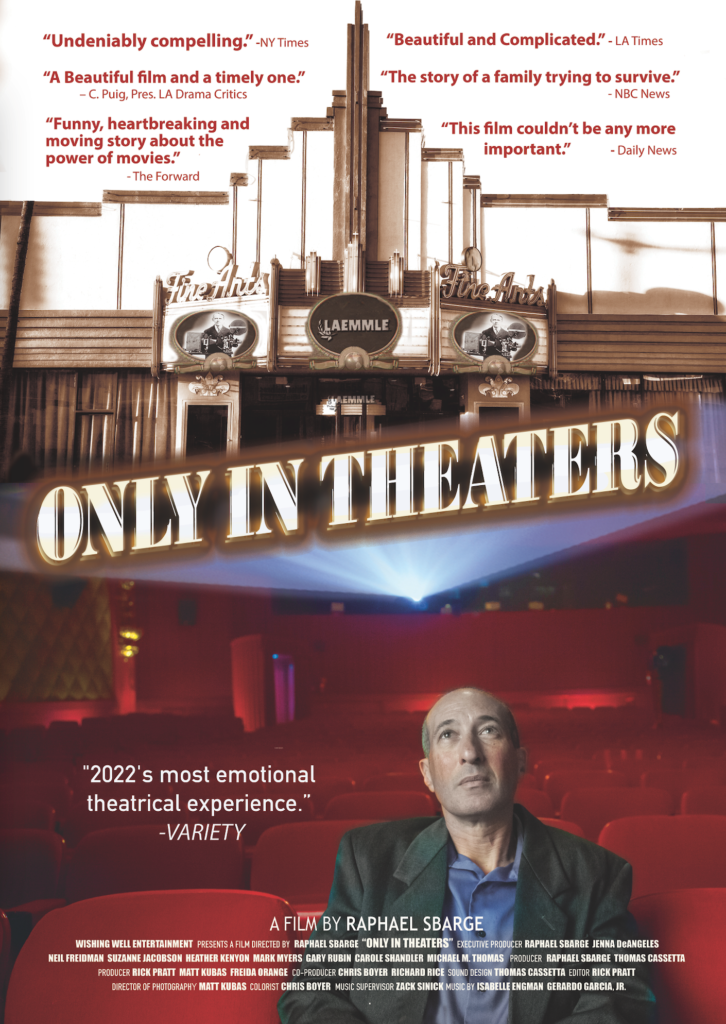
It feels like this is the story. Because it’s obvious that the Laemmle theaters, while important to the community, are causing a huge toll to Greg’s health. The sale seems imminent. The blow of this fact is cushioned by the realization that Greg’s life is suspended in stressful animation – and that perhaps the sale has the potential to bring peace to his life. Part of this stress is because Greg Laemmle is dedicated to operating the screens for the city – and not for the bottom line. Instead of building out their books, the Laemmle’s dedication has been creating a space for independent movies, and to give unknown directors a venue to have their movie screened. His mission, and ultimately that of his theater, is in showing work that should be seen – not just grabbing for dollars.
When Greg Laemmle makes the announcement at the end of 2019 that they would be retaining ownership, it feels like a slam-dunk victory. But the celebrations would be short-lived.
Because 2020 happened, and the rest of the documentary deals with the impacts of the pandemic on the Laemmle theaters, and Greg’s concerns and fears following COVID-19’s toll on his business. As he steers his business through the fraught waters of the ever-changing world, we get a full portrait of the burdens and joys of his legacy.
And while he jokes that his legacy is in allowing Tommy Wiseau to screen ‘The Room,’ it’s much larger than that. The movie has been dedicated to ensuring that we know the exact scope and importance of the Laemmle Theater’s legacy – and ultimately, Greg’s. Only In Theaters is an effective reminder that the importance of local theaters to the community in general, and to the artistic community in particular, can’t be understated.
While streaming can offer a place to see a movie, it can’t offer the movie-going experience. The movie-going experience is Only In Theaters. By the time the credits roll, you’ll crave nothing but an indie movie in an arthouse cinema. (Or more!)
2023: 10 Days in Watts
10 Days in Watts premiered earlier this year on PBS. The series is separated into four episodes: one called “Legacy,” the second called “We Are Taught to Survive,” a third named “Watts Pride,” and the final installment is “A Garden Grows in Watts.” You can watch all four episodes here.
10 Days in Watts is about the preparations that the WLCAC (remember them?) is undertaking in order to throw a grand opening for Mudtown Farms. While the event may be the goal, its larger interest is in the exceptional work of WLCAC. Mudtown Farms was originally acquired by the WLCAC in 2005, and they intended to create an urban farm / park that would allow people to find peace, in addition to growing the sort of food and produce that people need in the middle of a food desert.
The Mudtown Farms project was important to Tim Watkins in particular as it presented a possible way for him to extend the legacy of his father, WLCAC founder Ted Watkins, Sr. We are treated to interview footage of Ted Watkins Sr. talking about his experiences in creating the WLCAC, in addition to information about his impact in the community. Tim is adamant that he’s not looking to fill his father’s shoes – in fact he’s sure he can’t. Instead, he wants to honor his father’s memory by setting an example for people.
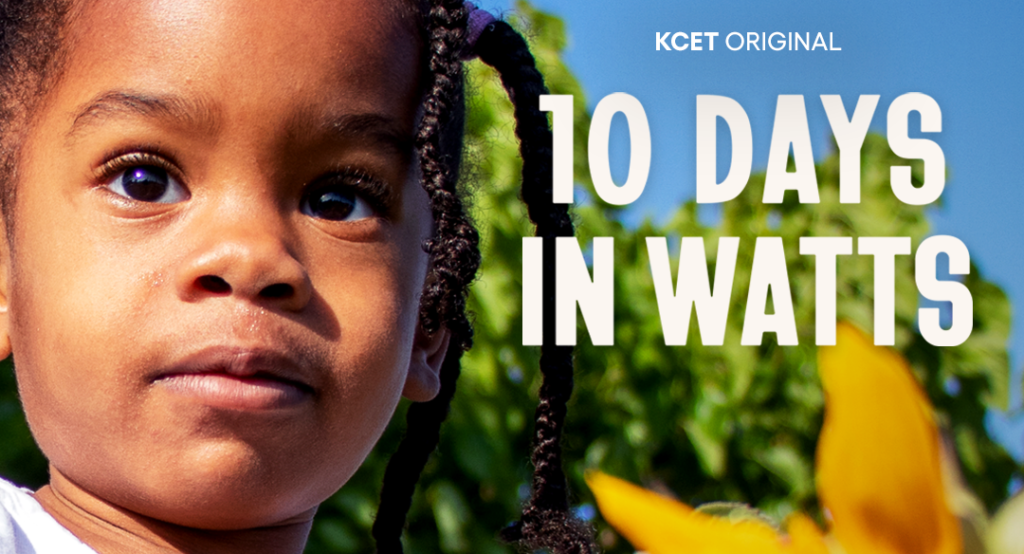
10 Days in Watts also doesn’t shy away from the hard realities that those working to lift Watts have faced. A conversation between Tim Watkins and Donny Joubert (President of the Watts Gang Task Force) revealed that after the Watts truce was realized by four gangs in 1992, authorities and organizations that had promised help disappeared. This left community organizers to their own devices to ensure the success of the treaty by supporting their community. Their conversation makes it clear they want to ensure that the next generation doesn’t feel discouraged, and instead sees the power of the community and its elders behind them.
‘We are Taught to Survive’ focuses on the Watts survival mentality. The last episode closed on the idea that survival in Watts was activism, and this installment explores that idea. Darryl Everett Jones, Sr. talks about this mentality, and also stresses the importance of the work. He expresses the importance of how we start our day: that each minute contains possibilities and potential – and that the wasted time on snoozing our alarms could be the very moments we need the most.
Enrique Vasquez (aka Kiki Smooth), a Latino rapper who was born and raised in Compton, spent a lot of time of his youth at Watts with his grandmother. He and his partner Brandon Jackson (known as “Main Event”) do a weekly podcast from Watts as a way to encourage people to not be afraid to come to Watts, and to increase the understanding that Watts is a neighborhood about caring for each other and lifting each other up.
That’s a commonality in all of the interviews – the passion, the dedication, and the value of service. In one of them, Janine Watkins expressed that at Watts as a child, she was loved – and by loving that community and the people in it, it was a way of reaching back into her past with love.
Throughout the episodes, it becomes clear that everyone recognizes the importance of passing an understanding of nature to the next generation. How else will someone raised in the urban landscape learn to be an effective steward of the Earth – and what will our fate be if it’s not taught?
‘Watts Pride” focuses on the deep feeling of pride that the residents of Watts and those who care for it feel for it. It spends most of its time introducing people who are working their way to positions where they can help Watts, the place they love.
It opens with sober information: Watts is in the 95th percentile of the most polluted communities, and there are census tracts labeled in the 100th percentile. Many homes are still serviced by lead pipes, and even airplanes dump fuel over Watts. A nearby lead smelting plant pushed Watts’ lead exposure issues far above safe levels. Around 20% of Watts homes have water that contains actionable levels of lead.
I had to pause the documentary just to sit with that and process it.
PhD candidates Malcolm Jones and Danielle Hoague mention how Tim Watkins helped inspire them to fight for Watts – and to help hand the fight over to the next generation. As Malcolm worked on the Watts lead information, he found that there were reporting issues that blended Watts information with information from more affluent communities, effectively burying the issues with Watts’ lead exposure. Danielle explained that while many people had heard of Flint Michigan, America was full of them needing attention: and Watts is one.
People like Johanna Rodriquez, who grew up in Watts and now works for the Mayor Los Angeles, are working to ensure that Watts gets the attention it so badly needs. Johanna talked about the sort of work her father did to help the community, and she, like many in this documentary, continues his work by assisting her community via her work and her advocacy in attempting to erase the stereotypes of Watts.
Michael Krikorian, a writer whose work has been featured in LA Weekly, relates how he was ‘assigned’ the Watts beat – and how he worked to gain the trust of the community so he could learn more about the people there. Watts is a place bursting with stories to be told – and they are far more rich and meaningful than many would give them credit for.
The episode ‘A Garden Grows in Watts’ emphasizes the importance of the WLCAC in general and Watts in particular. By exploring the stories of those who love and work for the betterment of Watts, we’re treated to an even more complete view of the neighborhood and how it helps those who work for it purpose, passion, and drive.
The people we meet and the stories we hear emphasize the importance of a good community to support children and the next generation. Part of this importance comes down to Watt’s power to transform, and people who were able to come back to Watts and build a life after prison talk about the transformative experiences they had, and how the Watts community allowed them to use their experiences to help heal the next generation.
LoneAllen Hall, the Nutritional Director for WLCAC talks about his many years working for WLCAC, beginning in the 1970’s for Ted Watkins, Sr. himself. He relates how important it is for him to pass on the sorts of lessons he got in the kitchen for those who work for him. He also discusses how Watkins would always have work to be done for those looking to work, and how that created opportunities for young people to have experience in work that ultimately went back into their community. It’s through his interview that we learn the nutritional programs at WLCAC serve over 400,000 seniors a year (around 2200 a day).
A large portion of the episode is dedicated to the preparations for MudTown Farms’ big day. It’s a huge event celebrating the past and the future of Watts – and includes everything from delicious food to pony rides. During the celebrations, there are reminders that the purpose of MudTown Farms is to pass the knowledge of the Earth on to the next generation, and to celebrate the work and mission of the WLCAC.
The story ends on a note of hope by showing the passion and courage of those fighting for Watts, and how well-positioned the diligent and loving organization is to create a green space where there once was a food desert.
Overall Observations: Themes
At first, it might feel like there are two documentaries about food and one about theaters, but that’s not what I see happening here. I find that there are five major themes that Raphael Sbarge’s documentary work focuses on: familial connection, community, sustainability, the power of collective experiences, and the importance of service.
Familial Connection
All three of these documentaries are anchored by familial connections. In “LA Foodways” we are first introduced to Tim Watkins, the current President of WLCAC and the son of Ted Watkins, Sr., its founder. In this piece, Tim talks about the importance of extending his father’s work.. It also features the multi-generational SGS Produce Only in Theaters has the Laemmle family as the center of its focus, and the legacy that Greg carries for his family (and the family of filmmakers everywhere rooting for him). The documentary not only spends time with Greg and his immediate family, but his delightful great aunt Alyse, who helps bring the family’s legacy into sharp focus. 10 Days in Watts continues to examine how Tim Watkins carries his father’s legacy by growing the WLCAC’s reach while staying ever true to its mission, and though he doesn’t feel he’s capable of filling his father’s shoes, he’s shown to be more than capable of extending and expanding his father’s vision. In many instances it’s obvious that Watts itself, as a place, is seen as a type of family to those who love it.
Community
In all three of the documentaries examined, community plays a vital role. In all three, the focus is on people serving their community. For LA Foodways, the focus is on groups like WLCAC and FoodForward as they deal with mobilizing around food waste in one of the country’s largest food deserts. Only In Theaters is focused on Greg Laemmle in particular and the Laemmle theaters in general. It explores how art house cinemas not only support filmmakers and their craft, but are important gathering places for the community and places of collective experience. 10 Days in Watts spotlights the exceptional work of WLCAC as they prepare for a large venture: the opening of MudTown Farms.
All three of these documentaries examine how those interviewed are working in service to their community, and are mindful of its needs and challenges. In all three, Interviews with members of the community are mixed in with those working to help them: whether they are a community built of members of a neighborhood like Watts, or a community of cinema-lovers and filmmakers.
Sustainability
For LA Foodways and 10 Days in Watts, the documentaries that center on food, it’s a bit easier to see how they directly relate to sustainability. LA Foodways emphasizes the importance of minimizing food waste, and working with organizations that seek to do the same. 10 Days in Watts shows how neighborhoods and communities can be served and transformed by green space – that creating such spaces allows for communities to gather, care for each other, and take pride. Both of these documentaries clearly deal with the need to create more sustainable systems for food.
But Only In Theaters is about sustainability, too – it’s about the sustainability of our culture. While streaming a movie can show us some pieces of the experience, the whole of the movie-going experience can only be experienced in a theater. Losing the voice of independent filmmakers would leave us at the mercy of the big studios, drowning out marginalized and new voices. While our news feeds are clogged with bad news and collective traumas, movie theaters allow us a space in which we can share collective events and more joyful experiences with our community.
Power of Collective Experiences
Raphael Sbarge’s documentary work also examines the power of those collective experiences. It’s the easiest to prove with Only in Theaters, as it is directly concerned with the preservation of spaces where collective experiences can happen. Several interviews mention the importance of seeing a movie, live, with an audience. Anyone who has been to a movie event, such as Wiseau’s The Room or the classic “Rocky Horror Picture Show” can also attest to the power that a collective movie-going experience can have.
But it’s there in the other two as well. In 10 Days in Watts, the power of collective experience is examined throughout – we see the importance for this community to come together, assert their identity, and cultivate pride. LA Foodways shows the power of collective experience by examining what happens when people come together to solve problems, and how collective action across many organizations can bring positive change.
Importance of Service
The biggest and most important theme of Raphael Sbarge’s work is the importance of service. All three of these documentaries show the power and importance of service in a community. In LA Foodways, several organizations come together to serve the underserved. They seek to ensure that as many people as possible have access to fresh produce, especially in a land of such abundance that we throw away edible food.
In Only in Theaters, Greg Laemmle’s service to filmmakers as a bastion of the art house world is shown to often tear him apart mentally, and take a toll on him physically. While many businesses exist only to serve their bottom line, Greg strives to ensure that filmmakers get the support they need to make their art: even when it might cost him a few night’s sleep.
10 Days in Watts examines the service of many members of the Watts community that interact with WLCAC’s exceptional work. Ted Watkins Sr.’s work not only transformed Watts, but inspired his son to take up the cause and continue and extend that work. The impact of their service on the Watts community can’t be understated.
What’s it All Mean?
When I was younger and I read the book ‘Dune’ I was extremely struck by the phrase ‘I exist to serve.’ I remember saying that to a friend and being laughed at. What a strange thing, I thought, to want to make fun of someone for that. Doesn’t everyone need service at some point of their lives? Or is it part of the American psyche that we’ve lost touch with our needs – that we subsume them to instead chase the impossible rugged individualism we’re sold along with the American Dream.
I am one of the sorts of people to whom Carnegie’s libraries meant more than his steel or business acumen, and I know I can’t be alone.
That’s why I found it joyful to find a documentarian that is less obsessed with our seedy side, and more entranced by bringing our best attributes to the light. Instead of focusing on the dire situation of food waste or the destruction of an industry via the dominance of streaming, or the constant fight it takes to support and bring Watts into the limelight – Raphael Sbarge focuses on those who are trying to bring positive change to their world. Is it any wonder that two of his organizations include the word “Wish?”
It’s a beautiful thing, to see someone shining a light on the work of those trying to transform our world for the better. It’s inspiring, and the attention that his work has brought to some of these organizations has been extraordinary for them. I am so heartened to see stories like this told, and I’m grateful to Raphael for telling them so well.
If you’re looking for something that will not only uplift you but inspire you, I highly recommend you check his work out!
